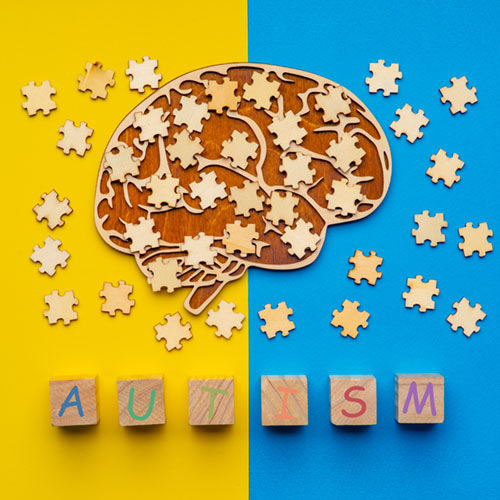
Raising my child with autism has been a profoundly transformative experience, filled with both formidable challenges and hard-won triumphs. This journey has tested my patience, strengthened my resolve, and imparted invaluable lessons that I never could have anticipated. When I first embarked on this path, I was wracked with uncertainty and overwhelm, unsure of what the future held. Yet, over time, I found unwavering strength in my child’s remarkable resilience, learned to advocate fiercely on their behalf, and discovered that with the right support, children with autism can thrive and lead fulfilling, independent lives.
The Early Years: Recognizing the Signs
My son is 21 years old today. As a baby he never fussed, was meeting his milestones on time and was a happy baby in general. It was when he got closer to age four that we saw subtle but discernible signs of difference show up in him. During a parent-teacher meeting at his preschool, his teacher raised concerns about his difficulty staying seated, his weak grip on crayons, and his limited engagement in activities.
At home, I began to notice other indicators as well. He would fidget with the tags on his clothes, become easily distracted, and frequently repeat lines from his favourite television shows. He was very dependent on me; his hands often had tremors when trying to grasp fine things like buttons. Socially, he was comfortable with familiar faces but avoided large gatherings and loud noises, hiding under the bed during Diwali festivities, unable to cope with the fireworks.
As a first-time parent, I was unsure of how to interpret these behaviours. When I shared my concerns with his paediatrician, I was reassured with the familiar, dismissive refrain: “It’s just a phase.”, and “He’ll grow out of it.” But deep down, I sensed that something more profound was amiss. And as time passed, the challenges only grew in both frequency and intensity.
Seeking a Diagnosis: The Long Road to Answers
The lack of understanding from family, friends, and even teachers made the journey lonelier. We were often blamed for being too accommodating, with comments like:
“You’re spoiling him.” or “He just needs more discipline.”
When my son was initially diagnosed with ADHD, I was reluctant to accept it. Something about the label didn’t sit right with me. On the recommendation of his school principal, we sought the guidance of a special educator. She suggested remedial classes, marking the first real step in helping our child.
Shortly after, we moved to Seattle, USA. I was six months pregnant at the time. During a routine paediatric check-up, the doctor observed my son’s lack of eye contact and attention span. We were referred to the Children’s Hospital, where a team of child neurologists and behavioural specialists ruled out ADHD. Instead, after a series of evaluations, he was diagnosed with autism – PDD NOS (pervasive developmental disorder not otherwise specified).
Further assessments by an occupational therapist revealed that he also had sensory integration disorder (SID). When I began researching SID, I was stunned — every symptom described my son perfectly. Finally, we had an explanation. We immediately started occupational therapy (OT), but it came with its own set of battles — dealing with insurance hurdles and navigating the healthcare system.
Navigating the School System: An Uphill Battle
My son started school in kindergarten, but it quickly became evident that the structured environment was overwhelming for him. The school recommended accommodations, but they were often insufficient. Teachers struggled to understand his needs, and we faced frequent negative feedback. Eventually, the school concluded that he could not cope in a regular classroom and needed one-on-one support.
At home, I did my best to help him improve his fine motor skills and sitting tolerance, which at the time was barely two minutes. Despite the setbacks, the OT sessions began to show positive results. His coordination and sensory regulation gradually improved.
The Move Back to India: New Challenges, New Hope
After a few years, we decided to return to India. However, finding a school for my son proved to be an ordeal. Schools that had initially promised admission backed out, and as the academic year approached, we were left wondering what to do.
After tireless searching and help from kind-hearted individuals, I discovered Brindavan Education Trust and Insight Academy. A meeting with the principal at Insight Academy resulted in immediate admission for him. I spent the first month in school with him, helping the teachers understand his needs and supporting his transition. My parents’ unwavering support was invaluable during this period — they cared for my younger daughter, then just two years old, while I focused on my son.
The combination of Insight Academy and Brindavan’s after-school remedial support transformed his educational journey. He began to thrive socially, made friends, and became more tolerant of sensory triggers like loud noises and large gatherings. Gradually, he could wait in lines, sit through entire movies, and even eat cold food — something that was once intolerable for him.
Progress and Triumphs: From School to College
My son successfully completed his 10th and 12th grades with the support of his teachers, family, and special accommodations. Today, he is in his third year at Jain University, pursuing his graduation.
He now commutes to college independently, attends classes, and manages his assignments with minimal support. Witnessing him take these steps towards independence fills me with immense pride. The next phase — integrating into the workforce and navigating the “real world” — is still ahead, and while it is uncertain, we remain hopeful.
Key Lessons from Our Journey
Through this remarkable journey, I have learned invaluable lessons that shaped both his growth and my own:
Collaborating with Schools and Teachers:
Strong partnerships with educators made a significant difference. Open communication, sharing insights about his strengths and needs, and advocating for appropriate accommodations played a vital role.
Tailored Learning Approaches and Life Skills:
Personalized teaching strategies, combined with a focus on life skills, empowered him to become more independent. Practical skills like self-care, time management, and social etiquette became part of his daily learning.
Planning for Financial Security:
Securing my child’s future meant planning for financial stability. We explored long-term savings plans, insurance policies, and government schemes that support individuals with disabilities.
Leveraging Technology for Support:
Technology became a powerful ally. Assistive tools like text-to-speech software, visual scheduling apps, and mind-mapping programs helped him stay organized and complete tasks. Audiobooks and accessibility tools reduced the stress of reading and writing.
Breaking Stereotypes and Advocating for Independence:
Throughout this journey, I encountered countless stereotypes about autism. Some believed children with autism couldn’t live independently or pursue meaningful careers. I refused to accept these limitations. With the right support, my son shattered those misconceptions and proved every doubter wrong.
The Power of Sibling and Family Involvement:
Family support was pivotal. His younger sibling and cousins were actively involved in his life, offering companionship and encouragement. One of the most touching moments was when his cousin volunteered as his scribe during exams when I couldn’t be there — a gesture of love and solidarity that I will never forget.
Parenting my son has been a transformative experience. It has made me more compassionate, resilient, and resourceful. Though the road has been filled with struggles, it has also been illuminated by moments of immense joy and pride.
Watching my son overcome obstacles, embrace his strengths, and grow into a confident, empathetic, and independent young man has made every challenge worth it. I’ve learned that with love, patience, and unwavering advocacy, children with autism can not only thrive — they can inspire the world with their courage and strength.

